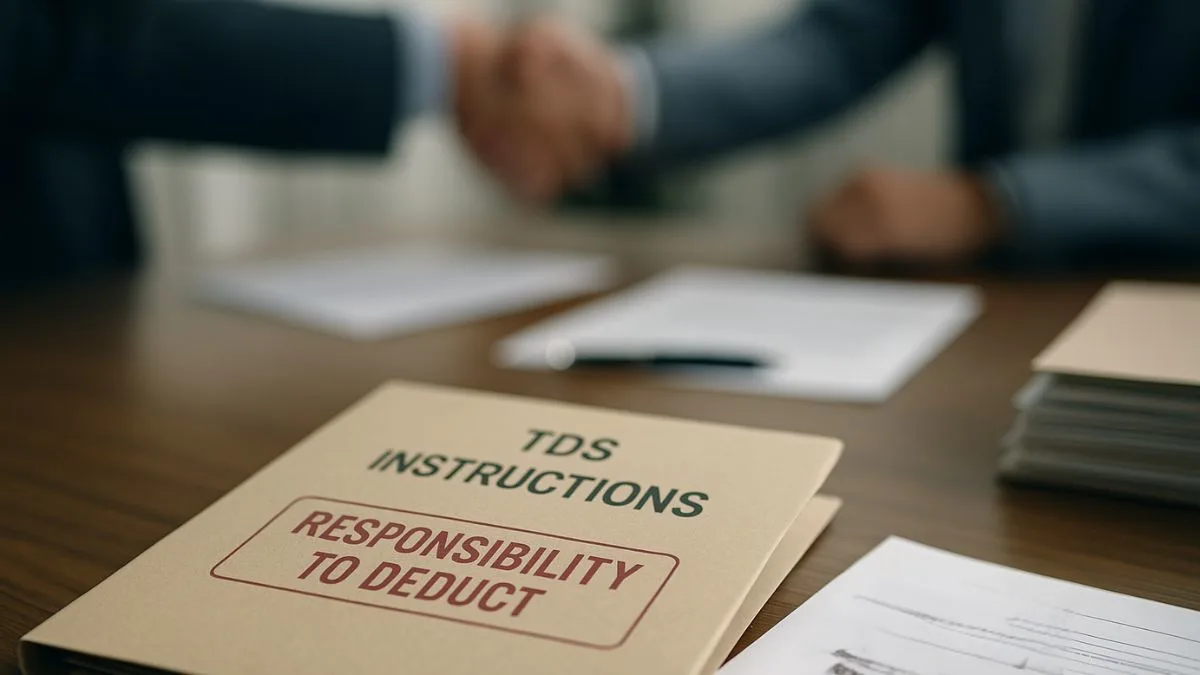
Most of us love earning interest from fixed deposits, recurring deposits, or loans. But did you know the government might already be taking a cut before it reaches your account?
That’s right. Section 194A of the Income Tax Act mandates the deduction of TDS (Tax Deducted at Source) on interest income other than securities. So, whether you’re earning interest from FDs, loans, or even NBFCs, you need to understand how TDS works under this section.
Let’s simplify it for you.
What Is Section 194A?
Section 194A is a provision under the Income Tax Act, 1961. It is responsible for the tax deduction at source on interests paid to resident individuals, Hindu Undivided Families (HUFs), or firms.
Simply put, if you are earning interest income other than interest on securities, like from a bank deposit or an unsecured loan, TDS will be deducted before you receive it.
This ensures that taxes are collected at the source itself, promoting better compliance and transparency.
What Kind of Interest Is Covered?
Section 194A covers TDS deduction on interest income other than securities. Here’s what falls under this umbrella:
- Interest on fixed deposits (FDs)
- Interest on recurring deposits (RDs)
- Interest on loans, including unsecured loans
- Interest paid by NBFCs
- Interest on delayed payments in commercial transactions
So, if you lend money to someone privately, or your employer gives you interest on delayed salary, TDS might apply.
TDS Rate under Section 194A
By default, TDS is deducted at a rate of 10% on interest income other than interest on securities.
Let’s break it down:
- If you earn more than the threshold limit in a year, the deductor (bank, company, or individual) must deduct tax.
- The current TDS rate of 10% on interest accrued applies if your PAN is available.
- If PAN is not provided, the TDS may be as high as 20%.
For instance, if your FD interest for the year is ₹60,000 and PAN is submitted, the bank will deduct ₹6,000 as TDS and credit ₹54,000 to your account.
What Is the Threshold for TDS Deduction?
TDS is not applicable if your interest income stays below the following limits:
- ₹40,000 in a financial year for general taxpayers (₹50,000 for senior citizens)
- ₹5,000 if the payer is someone other than a bank or financial institution
However, once you cross these limits, Section 194A mandates the deduction of TDS on interest income.
This is why it’s crucial to track all your bank accounts. Even if each deposit earns less than ₹40,000, the combined total may breach the threshold, triggering TDS.
TDS on Interest Paid to Non-Residents
One important point: Section 194A does not apply to non-residents.
Instead, for non-residents, TDS is applicable on interest paid to non-residents under Section 195 of the Act. In such cases, TDS is deducted at 30% or as per the Double Tax Avoidance Agreement (DTAA) if available.
So if you're an NRI earning interest from Indian sources, TDS on interest income other than securities is still applicable—but under a different section.
TDS on Interest from NBFCs and Unsecured Loans
The scope of Section 194A also includes interest on loans from NBFCs or even friends and private lenders. If a company or business entity pays you interest, they must deduct TDS if the amount crosses the threshold.
Similarly, if you lend an unsecured loan, and the interest exceeds ₹5,000 per year, the borrower must deduct TDS and deposit it with the government.
Yes, even personal lending is tracked!
That’s why people often search for:
- TDS on interest on an unsecured loan
- TDS on interest on the unsecured loan limit
- Section 194A TDS rate
These queries show how relevant and misunderstood this topic is.
How to Avoid TDS Deduction
If your total income is below the taxable limit, you can submit:
- Form 15G (for individuals below 60)
- Form 15H (for senior citizens)
These forms help you declare that your income is below the exemption limit, and the deductor will not deduct TDS.
Remember, these forms must be submitted at the start of the financial year to avoid automatic deduction.
What If TDS Is Already Deducted?
Don’t worry. If TDS has been deducted and your income is still below the taxable limit, you can claim a refund while filing your Income Tax Return (ITR).
Always verify TDS details in Form 26AS or the Annual Information Statement (AIS).
Final Thoughts
To sum up, Section 194A is a key provision that mandates the deduction of TDS on interest income that isn’t from securities. It ensures that taxes are collected upfront, making life easier for both taxpayers and the government.
Just remember:
- TDS is deducted at a rate of 10% on interest income other than interest on securities
- The TDS rate of 10% on interest accrued applies only when PAN is provided
- TDS is applicable on interest paid to non-residents, but under a different section
- If you’re lending or earning interest from any source other than listed securities, check if Section 194A applies
Want expert help managing TDS and saving tax?
👉 Visit www.callmyca.com to get started with India’s trusted CA services.











